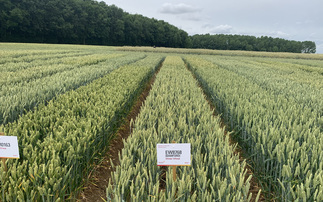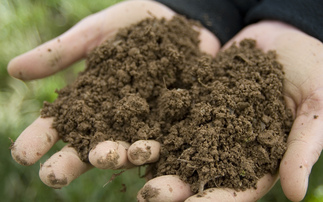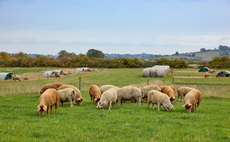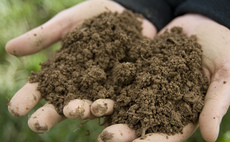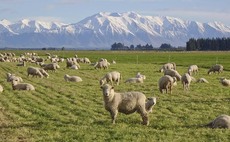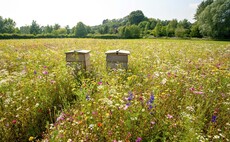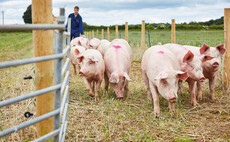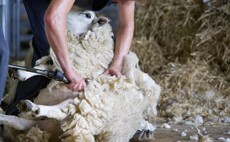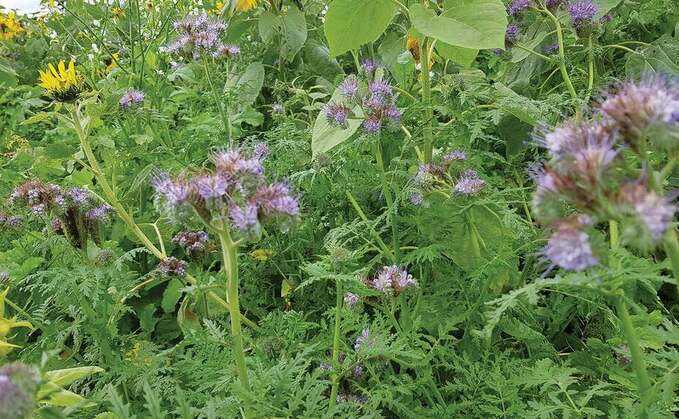
With so many species available, picking a cover crop mix to fit your system may seem daunting. But the advice of Richard Barnes, sales manager at Kings Crops, is to keep things simple.
He says: "A lot of people read about crop diversity and multispecies mixes - they are important, but if you are new to cover cropping you can easily get quite overwhelmed by six, 10, or 12-way species mixes. Our general advice when starting out is to have maybe four different species, and leave a strip of ground as normal, so either cultivated or as stubble. Then you can get a really good insight into how all these species perform in your soil. What will happen on a clay soil will be very different to what happens on a chalk or sandy soil."
Lab analysis once the crop has established will allow growers to assess the dry matter, NPK uptake and feed value of the cover crop.
Mr Barnes says: "We are picking up between 80-100kgN/ha in a good cover crop. There is always a big question about when and how that is available but it will always be available in the future, so there could be a lot of money's worth of nutrition in the field."
Benefits
While a more diverse cover crop mix will offer a range of benefits, if there is one particular goal that the farmer wants to achieve from growing that cover crop, and there is one species best for targeting that, then adding more species is going to water down its effect.
This is according to international soil scientist, Joel Williams, who says: "A monoculture is not bad if you are chasing one goal. Perhaps not repeated monocultures again and again, but sometimes if you have a very specific goal, there is nothing wrong with growing one species either."
However, most farmers will be chasing many goals, so it all depends on what you are trying to achieve, he says.
"You might have a 16 species mix, which in some years some species will do better than others and vice versa. There is no magic number."
However, the downside to a higher number of species is the added cost.
"That increase in diversity is adding functionality which can be very good, but even under a monoculture, a plant releases an incredible cocktail of root exudates," says Mr Williams.
"I am very partial to a classic oat and pea combination - it can act as a companion or an intercrop, a whole crop or just a cover crop. It is a combination that just works. Amongst the cost debate, I think there is nothing wrong with these two classics that do a great job together - you can use home-saved seed, it does not have to be an expensive mix. If you want to go beyond two species and have more diversity that is fine - you can buy some phacelia or radish and spice things up. Covers do not have to be expensive and there are plenty of ways to do it more economically."
End goal
The species being grown will also very much depend on the goal of the farmer, and while one plant species has a very diverse array of exudates, it only has a certain cocktail it can release.
"That is different if it is a cereal, a legume or a brassica," says Mr Williams. "So, when we bring those together, both species will benefit."

Considering the end goal will also help to pick which species to grow in a mix.
"It is not the diversity bringing the effect, it is the specific function of the plant we use. For example, black oats are specifically for soil structure. Functional diversity is the important thing. If I have a three-way mix of cereal, legume and a brassica versus an eight-way mix of eight different legumes, I would choose the three-way mix. It has functional diversity and different species with different specific functions."
A UK study comparing a cover crop of clover, black oats, tillage radish and phacelia found black oats developed greater soil pore connectivity than other plant species whereas phacelia decreased porosity.
"This is because it does not have that nice, big fibrous root system so it did not improve soil structure much at all," explains Mr Williams.
However microbial communities, particularly the fungi underneath the phacelia, were most notably improved.
"Black oats were best for structure, but phacelia was better for stimulating soil fungi. Each species has different specialities and benefits but if we bring those two together we get both."
Revenue from cover crops
Under Countryside Stewardship, growers can get paid £129/hectare to grow a single species green cover, and under the new SFI update, £129/ha for a cover made up of at least two species. There is also the option to gain revenue from local graziers, but the two options might not necessarily go hand-in-hand.
Mr Barnes says: "Under stewardship rules, the cover crop can be destroyed [through grazing or other means] in late January or February, so if you are in Countryside Stewardship we would suggest if you had 100ha of cover, maybe keep 50ha out of stewardship which can be grazed first, and you can move onto the stewardship cover later in the winter."
For growers looking to graze their covers, Mr Barnes recommends avoiding buckwheat, but most other species are suitable.
"You can graze mixtures with buckwheat in but need to let it die in a frost first. However, we would always advise checking with your vet before grazing any mix."
Interest in incorporating species such as forage rye and westerwold into cover crops is growing, because when they are being grazed, they still provide good green cover of the soil.
"Dual purpose grazing mixtures are also increasing in popularity," Mr Barnes says. "A lot of people focus on stubble turnips for winter fodder, but they are a very good clubroot host and we find you have to force the sheep to eat the bulb. They can also lead to soil erosion if there is heavy rainfall on sloping fields.
"Cover crops you might graze more extensively but it can be better for the soil, and feed value is reasonably comparable. You probably have greater biomass and more diversity."
Larger seeded mixes such as forage rye, oil radish and turnip rape are also more likely to overcome dry establishment challenges and are well-suited to later planting into mid-September.
"Stubble turnips and turnip rape with berseem clover will give a bit of nitrogen fixing and offer greater diversity in the sward from a rooting perspective, and better palatability for the sheep. Try a block of stubble turnips and a dual purpose mixture and compare the two."
Drilling date
At Agrovista's Lamport AgX trial site in Northamptonshire, independent researcher David Purdy has been trialling the effects of cover crop planting dates on biomass production.
"In order to drive biomass you must plant cover crops as early as possible," says Mr Purdy.
Three trial plots mixes of black oats, clover and phacelia were planted on three different dates: August 17, August 30 - which is generally when they establish cover crops at Lamport - and the latest planting date of September 15.
The trial plot planted on August 17 yielded 10 tonnes of biomass per hectare; planting on August 30 saw the biomass figure halve to 5t/ha; and the latest planting date of September 15 saw the biomass plummet further to 1t/ha.
Key species and what they do:
- Common oat - low cost and winter hardy
- Black oat - quick growing, frost susceptible so ideal for catch crops
- Forage rye - winter hardy, great grazing crop with quick canopy regrowth
- Phacelia - small seed so not much is needed in a mix. It has a fine root system and its flowers attractive to pollinators
- Buckwheat - great miner of phosphate, not winter hardy - avoid grazing until killed by frost
- Vetch - big, bold seed. Nitrogen fixer, grazes well
- Berseem clover/crimson clover - small seed, good N fixing, quick growing annual
- Oil radish - numerous available varieties for different roles, excellent scavenger of nutrients, grazes well, winter hardy, does not exacerbate clubroot
- Mustard - low cost, poor scavenger of N, exacerbates clubroot
- Linseed - small seed, low cost addition with useful tap root
- Turnip rape - very winter hardy, ideal for later sowing, grazes well so good alternative to stubble turnips
Source: Kings Crops
Tune into the podcast
To hear more from Richard Barnes and other cover crop experts, tune into the Crop It Like It's Hot Podcast - A crash course in cover crops.
More information
Joel Williams was speaking at the BASE-UK 10-year anniversary conference and annual AGM, held in Nottingham, and marking a decade of ‘growing confidence' within its community of regenerative farmers.













